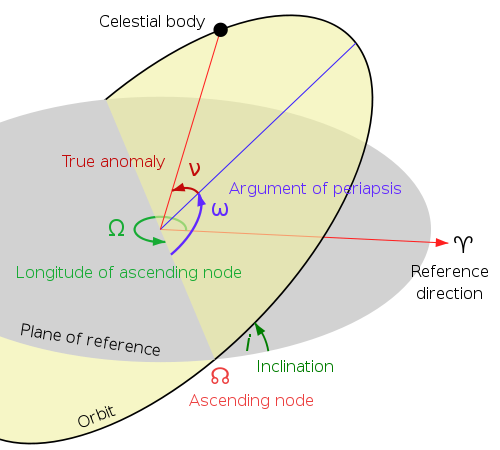
Caution: the d and f orbital regions of the table correspond to energy levels that are different from the period they're located in. Thus, its electron configuration will end. It's also in the fifth column of the periodic table's p orbital block. For example, when writing an electron configuration for Chlorine, think: "This atom is in third row (or "period") of the periodic table. Specifically, the 2 leftmost columns represent atoms whose electron configurations end in s orbitals, the right block of the table represents atoms whose configurations end in p orbitals, the middle portion, atoms that end in d orbital, and the bottom portion, atoms that end in f orbitals. Use the periodic table as a visual guide to write configurations – the order that you add electrons to orbitals corresponds to your position in the table. For example, atoms in the second column from the left always end in "s 2", atoms at the far right of the skinny middle portion always end in "d 10," etc. You may have already noticed that the shape of the periodic table corresponds to the order of orbital sets in electron configurations. Use the periodic table as a visual shortcut. Note that the above list, if all the shells were filled, would be the electron configuration for Og (Oganesson), 118, the highest-numbered atom on the periodic table-so this electron configuration contains every currently known electron shell for a neutrally charged atom. An electron configuration for an atom with every orbital completely filled would be written: 1s 2 2s 2 2p 6 3s 2 3p 6 4s 2 3d 10 4p 6 5s 2 4d 10 5p 6 6s 2 4f 14 5d 10 6p 6 7s 2 5f 14 6d 107p 6. Once you know the order of orbitals, you can simply fill them according to the number of electrons in the atom. For instance, a filled 4s 2 is lower energy (or less potentially volatile) than a partially-filled or filled 3d 10, so the 4s shell is listed first. Note that orbital sets are numbered by electron shell, but ordered in terms of energy. Remember the order of the letters with this mnemonic: Sober Physicists Don't Find Giraffes Hiding In Kitchens. The h set would have 11 orbitals and a maximum of 22 electrons, the i set would have 13 orbitals and a maximum of 26 electrons, and the k set would have 15 orbitals and a maximum of 30 electrons. The g set has 9 orbitals, so it could theoretically contain 18 electrons. No known atoms have electrons in any of these orbitals. The g, h, i and k orbital sets are theoretical. The f orbital set contains 7 orbitals, so it can hold 14 electrons. The d orbital set contains 5 orbitals, so it can hold 10 electrons. The p orbital set contains 3 orbitals, and thus can hold a total of 6 electrons. The s orbital set (any number in the electron configuration followed by an "s") contains a single orbital, and by Pauli's Exclusion Principle, a single orbital can hold a maximum of 2 electrons, so each s orbital set can hold 2 electrons. Each set of orbitals, when full, contains an even number of electrons. So when working with the p sublevel, electrons fill like this.up, up, up.down, down, down.What is an atomic orbital? As an atom gains electrons, they fill different orbitals sets according to a specific order. #ORBITALS FOR AS ELEMENT FREE#
You would never sit right next to someone you did not know if there are free seats available, unless of course all the seats are taken then you must pair up.

When filling sublevels other than s, electrons are placed in individual orbitals before they are paired up.Įlectrons fill like people do on a bus. Incorrect electrons must spin in opposite directionsĬorrect the electrons have opposite spins (Therefore, no two electrons in the same atom can have the same set of four Quantum Numbers. ) So, if an electron is paired up in a box, one arrow is up and the second must be down. When we draw electrons, we use up and down arrows. There are a few rules for the box and arrow configurations.Īufbau Principle - electrons fill orbitals starting at the lowest available energy state before filling higher states (1s before 2s).Īn orbital can hold 0, 1, or 2 electrons only, and if there are two electrons in the orbital, they must have opposite (paired) spins. This sublevel configuration can be broken down into orbitals (boxes).ġs 2 2s 2 2p 6 3s 2 3p 6 4s 2 3d 10 4p 6. sublevelį z 3 f xz 2 f yz 2 f xyz f z(x 2-y 2) f x(x 2-3y 2) f y(3x 2-y 2) An orbital is defined as the most probable location for finding an electron. Sublevels can be broken down into regions called "orbitals". It is called the "Box and Arrow" (or circle and X) orbital configuration.

There is yet another way to writing electron configurations. Pauli Exclusion Principle and Hund's Rule Box and Arrow Orbital Configurations using






 0 kommentar(er)
0 kommentar(er)
